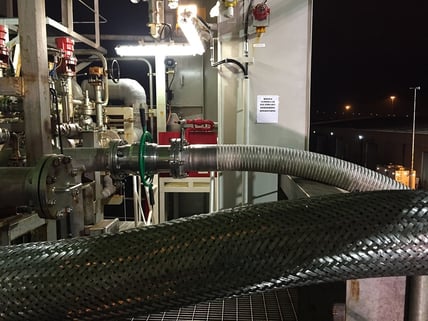%20blog.jpg)
To the casual observer, liquefied natural gas (LNG) is sometimes thought of as a dangerous substance and its transport fraught with danger. But that perception doesn’t match at all with reality.
It is true that as a cryogenic material, LNG is a liquid and its vapors are flammable. As such, there are some potential safety risks associated with LNG. That being stated, LNG can be produced, transported, and re-vaporized as safely – and in most cases more safely – than other liquid energy fuels. It has the best safety record of all common fuel types – particularly when compared to refineries and other petrochemical segments.
In nearly 35,000 shiploads of LNG traveling well over 100 million miles, there is no record of any fire occurring on the deck or in the cargo tanks of any LNG ship. One reported fatality at an LNG terminal occurred in 1977 when a large-diameter valve ruptured and a worker was sprayed with LNG. The worker’s death occurred not because the LNG ignited, but because of his contact with the very cold LNG liquid.
LNG’s enviable safety record makes it easy to understand why insurance rates average 25% lower for LNG container shipping than for crude oil shipping. Moreover, the liability within the insurance coverage is focused on fire and property damage rather than on environmental pollution. That’s because if LNG spills on the ground, it vaporizes into non-toxic methane vapors that dissipate quickly, leaving behind no residue.
LNG spills on water do not damage waterways or harm aquatic life. The only danger is of a vapor cloud catching fire before dissipating, if there is a sufficient source of ignition.
As for any other environmental concerns, LNG can be readily produced from bio-methane, which means that it can be a renewable fuel – essentially the greenest as well as safest fuel available in the world.
Dixon couplings and retention devices are designed to work safely for their intended use. It is recommended that all hose assemblies be inspected regularly (before each use) to ensure that they are not damaged or have become loose. If any problem is detected, hose assemblies must be removed from service immediately.
This blog was excerpted from Liquefied Natural Gas: The Fuel of the Future for Shipping and Transport whitepaper.
